Photos and legends extracted from The Cornhusker, 1919, Volume 13, University of Nebraska showing those alumni who were killed or died in WW1. You will notice a large part of these men and women died from influenza. At the time of the War the Spanish Flu, a new virus, spread easily through infected people worldwide, killing an estimated 50 million.
In a spirit of humility, we present this, – the 1919 Cornhusker, in tribute to Our Noble Soldier Dead, who died that others might live. Who carried the Torch of Freedom high until it lighted the Heavens. Who proved that there is a God of Right, Justice, and Mercy.
Photos can be found at the bottom of the page. Those with an * before their name did not have a photo included.
Arthur E. Allyn, A. B., ’14
Capt. Arthur E. Allyn enlisted early in the war and received his commission as captain at Madison Barracks, New York. In June, 1918, he went overseas in command of his company of the 312th Infantry. While fighting to hold a position that meant much to his division and for which he received high praise from his colonel, he received fatal wounds, which resulted in his death on October 23, 1918. He was the only son of Mr. and Mrs. A. E. Allyn, of Hastings.
Andrew Emmett Anderson, B. Sc., ’12
Andrew Emmett Anderson, at the time he was called into the service, was managing a 7,000 – acre farm near Jacksonville, Florida. He was sent to Jefferson Barracks, October 1, 1918, and ten days later he died of influenza. His home formerly was at Lincoln, Nebraska.
Waldo Cornell Arendt, Ex – ’19
Son of Mr. and Mrs. George Arendt, of Lincoln, Nebraska, enlisted in the aviation service, December 8, 1917. He was sent to Brooks Field, Texas, and remained there until September 16, 1918. From there, he went to New York City, where he was taken ill while waiting for overseas orders. On September 29, he died at Aviation Hospital, Garden City, New York.
David D. Barrett, Ex – ’19
David D. Barrett came to the University of Nebraska in 1917, from Leland Stanford, where he had attended college the previous year. In June 1918, he enlisted in the navy and spent three months at the Great Lakes. He came back to the University of Nebraska at the opening of the school year to instruct in the S. N. T. C. He was stricken with influenza and died at a local hospital on September 27, 1918. David Barrett lived at Omaha, Nebraska.
Lee Wilson Bird, Ex – ’19
Lee Wilson Bird was a Lieutenant in the Aviation Service and was instantly killed in a tail spin fall, Dec. 7, 1918, at Brooks Field San Antonio, Texas. He was a student in the School of Mines in Colorado, and was transferred to the University of Nebraska. His home was at North Platte, Nebraska.
Howard Paul Bittinger, Ex – ’16
Lieut. Howard Paul Bittinger enlisted in the Quartermaster Corps one month after war was declared. The latter part of 1917 he was transferred to Aviation, in which branch he received his commission in February, 1918. While at Aviation school he was severely wounded by a fall from an aeroplane. As soon as he was able, he was sent to France. On August 26th, he wrote to his mother, stating that he was going up again in the afternoon and nothing has been heard from him since that time. At the time of his enlistment, Howard Bittinger was living in New York City.
James Howard Boggs, Ex – ’14
James Howard Boggs entered the service at Lorella, Oregon, on September 18, 1917. After several months in a training camp on the west coast, he was sent to Camp Mills to a regular Army Infantry Division, which was stationed there at that time. He went to France in February, 1918. While passing through a heavy machine gun barrage, in July, 1918, he was killed. His home was at Lincoln, Nebraska.
Winfield Starr Breese, Ex – ’13
Winfield Starr Breese, Lieutenant in Aviation, was killed in an airplane accident in France, December 19, 1918. He attended the first O. T. C. at Ft. Snelling and was transferred to aviation. He finished the ground school at Columbus, Ohio, and was commissioned at Kelly Field. His home was at Lincoln, Nebraska.
Lieut. Grosvenor P. Cather, Ex’ -08
Lieut. Cather received his commission at the first Officers’ Training Camp and was immediately sent to France. After training there for several months, he took his post at the front. On the morning of May 28, 1918, he received citation for bravery and later in the day was killed in action at the battle of Cantigny. His home was at Bladen, Nebraska.
William Alexander Cone, Ex – ’17
William Cone, a member of the 356th Infantry, 89th Division. The details regarding his death are lacking except for a Government telegram stating, “Killed in action, November 11, 1918.” He was the only son of Mr. and Mrs. H. H. Cone, of Wymore, Nebraska.
Lieut. Richard Eugene Cook, Ex – ’20
Lieut. Cook, of Council Bluffs, Iowa, a member of Company H, 126th Infantry, 32nd Division. In the fighting of the Vesle River region of August 4, 1918, Lieut. Cook was among the number who lost their lives. He was a member of the class of 1920.
W. Lloyd Davis, A. B., ’08
W. L. Davis, of Lincoln, Nebraska, enlisted in the Marines on April 8, 1918, and was sent to Mare Island. While engaged in a boxing match, May 22, 1918, he was hit on the head and fell, crushing his skull. He died in the hospital one hour later.
Francis Lewis DeBrunner, Ex – ’20
Francis DeBrunner entered the service at Camp Funston, September 5, 1917. He was a member of Company A, 355th Infantry, 89th Division, which sailed for France in May, 1918. He was gassed in a battle on August 8th, and succumbed to the effects September 9, 1918.
Fletcher L. Farley, LL.B., ’13
Enlisted in the U. S. Marines, February 1, 1918, and was sent first to Paris Island, South Carolina. Later he was transferred to Quantico, Virginia, from where he sailed for France, May 27, 1918. On June 24, while making an attempt to aid his captain who had been previously wounded, he received a wound which resulted in his death on Juine 27. His home was at Bancroft, Nebraska.
Harold La Salle Fiske, ’10
Lieut. Harold La Salle Fiske, after receiving his commission, was assigned to a Machine Gun Company at Camp Upton, New York. He then sailed for France late in the summer, being assigned to the 77th Division. While fighting with this division in the Argonne Forest region, he was severely wounded and died October 8, 1918. His home was in Lincoln, Nebraska.
Joseph Cornelius Flaherty, Ex – ’18
Lieut. Joseph Flaherty enlisted in aviation in May, 1917. After receiving his commission, he was stationed at San Antonio, Texas. While home on a furlough, he became sick and died of influenza on October 18, 1918. His home was at Dixon, Nebraska.
Lt. Robert H. Flansburg, A. B. ’16
Lieut. Flansburg was commissioned at the first O. T. C. at Ft. Snelling and was assigned to duty with the Rainbow Division in France, where he was killed in action on June 15, 1918. He was a member of the class of 1916, and lived in Lincoln, Nebraska with his parents.
Albin Folda, Ex – ’15
Corporal Albin Folda, of Clarkson, Nebraska, entered military service on April 27, 1918. He was a member of Co. M, 355th Infantry, 89th Division. On June 4, 1918, he sailed for France, and reached the trenches by the middle of August. While going over the top on October 21st, he was struck in the head by a fragment of a shell and was killed almost instantly. He was the only son of Emil Folda, of Clarkson, Nebraska.
Earl Forbes, Agr. ’16
Lieut. Earl Forbes, of Fairmont, Nebraska, was a bombardment observer of the 20th Aerial Squadron, A. E. F. In an aerial combat in the St. Mihel offensive, a much larger enemy force attacked the 20th Squadron and succeeded in bringing down all but two machines. It was in this engagement Lieut. Forbes was shot down. He was reported killed September 26, 1918.
Isham Reavis Gist, A. B., ’13
Isham Reavis Gist, of Falls City, Nebraska, enlisted at Ft. Riley on June 26, 1918. He was a sergeant in the Insurance Department, when he was stricken with influenza. He was ill just a week and passed away October 21, 1918.
Paul Albert Hagelin, A. B., ’16
Corporal Paul Albert Hagelin enlisted on April 26, 1918. He was at Camp Funston only three weeks, being immediately assigned to Co. C, 341 Machine Gun Battallion. On June 25, 1918, he sailed for France and was immediately sent to the front, taking part in the battles at St. Mihel, Argonne Forest, and Meuse River. On October 31, he was fatally wounded in Argonne Forest region, dying on November 2, 1918. Before entering the service, Paul Hagelin was a teacher in the Commercial Department at Lincoln High School. His home was at Wahoo, Nebraska.
Ralph E. Halldorson, Ex – ’12
Ralph E. Halldorson arrived with his contingent at Camp Dix, New Jersey, on July 27, 1918. He was immediately transferred to the 59th Pioneer Infantry Headquarters Company. On August 31, he sailed with his company for France, and upon arriving there, was taken sick with pneumonia and died September 18, 1918. When Ralph entered the service he was in charge of a studio at Syracuse, New York.
Isaac F. Halverstadt, LL.B., Ex – ’19
Isaac Halverstadt enlisted in the Navy, January 5, 1918. He was stationed at Camp Perry, Great Lakes Naval Station, as a second class seaman when stricken with pneumonia, which resulted in his death September 24, 1918. He formerly lived at Lincoln, Nebraska.
Richard L. Harris, Ex – ’10
Sgt. Harris, Co. F, 355th Infantry, 89th Division, enlisted October 4, 1918. He received training at Camp Funston, sailed for France in the latter part of May, and was severely wounded October 22nd, in the fighting in the Argonne Forest. He was transferred to a hospital in Washington, D. C., where he died from the effects of the wounds he received in action. His home was at Lincoln, Nebraska.
* Mones Johnson Hawley, Ex – ’13
Lieut. Hawley enlisted in the Coast Artillery at the beginning of the war, receiving his commission in that branch of the service in November, 1917. During the summer of 1918, he sailed for France and took part in the fighting until the armistice was signed. while with the Army of Occupation, he became sick with spinal meningitis, which was the cause of his death in March, 1919. His home was at Nebraska City, Nebraska.
Merle W. Huntington, Ex – ’16
Lieut. Merle Huntington received his commission as Lieutenant in the first Training Camp at Ft. Snelling in May, then being assigned to Camp Dodge. From there he went to Camp Joseph E. Sherman, where he sailed for France on December 17, 1917. At first, he was assigned to the Quartermaster Corps, but after the armistice was signed, he transferred to the Motor Transport Corps. While stationed at Bar Sur Aube, France, he died of influenza, on February 16, 1919. His home was at Liberty, Nebraska.
Charles James Hyde, Ex – ’18
Lieut. Hyde was a Second Lieutenant in aviation service. He enlisted in October, 1917, and was killed in an airplane accident on August 28, 1918, at Love Field, Texas. At the time of his death, he was instructor in formation flying. He was a Law student and lived at Norfolk, Nebraska.
A. Fred Keith, LL.B. ’14
Captain A. F. Keith was assigned to Battery E, 319th field Artillery, U. S. A., 82nd Division. Captain Keith has been reported as missing in action since October 19, 1918, as that is the last time any news was received from him. At the time he was reported missing, he was in the thick of the fighting in the St. Mihel offensive, but there is still hope that he is living.
Harold Clifford Kelley, Ex – ’18
Harold Kelley left school to attend the first O. T. C. at Ft. Snelling and after completing training there was transferred to the Air Service. He received his commission as Second Lieutenant in May, 1918, and on June 19, 1918 was killed in a tail spin at Kelly Field, Texas. His home was in Omaha, Nebraska.
John Blaine Kuhn, A. B., ’18
Among the first of the Nebraska men to give their lives for the service was Baline Kuhn, who died at Camp Green, North Carolina, March 26, 1918. Blaine Kuhn entered the service February 16, 1918, and was sent immediately to Camp Greene.
Edward H. Larson, Ex – ’20
Sgt. Edward H. Larson, of Genoa, Nebraska, was in Co. H, 355th Infantry, 89th Division. He was killed in the morning of September 12, 1918, while going over the top in the St. Mihel sector.
Taylor E. Lewis, Ex – ’19
Sgt. Taylor E. Lewis enlisted January 5, 1918, at Camp Funston, Kansas. On June 2, he sailed for France, and after two months’ training behind the lines, he went into the trenches the first of August. In the first day’s advance in the St. Mihel region, he was severely wounded by bursting shrapnel and died of these wounds September 30, 1918. Taylor was a sergeant in Co. L, 355th Infantry, 89th Division.
Morris Nathan Liebman, E. E., ’00
Lt. Col. Morris Nathan Liebman enlisted in the army as a private and was gradually and steadily promoted until on May 3, 1917, he received his commission as Lt. Colonel. While at his battalion headquarters on the Flanders front, a shell struck the building he was in and he was instantly killed. Lt. Colonel Liebman was assigned to the 105th Infantry, which was a New York Division.
Arthur H. Marsh, A. B., ’05
Lt. Arthur H. Marsh, a graduate of Nebraska in 1905, and later one of her Rhodes scholars, entered the service as chaplain and was assigned to the 3rd Battalion, 18th Infantry, on October 7, 1918. While aiding the wounded on a battlefield, he was hit by a piece of shrapnel. At the time of his enlistment, he was living in Omaha, being the minister in the St. Paul Episcopal Church.
Ivanhoe K. Metz, Agr. ’17
On September 18, 1917, Corporal Metz enlisted in the Marines and was sent to Paris Island, South Carolina. On February 8, 1918, he was transferred to Quantico, Virginia, and attached to the 92nd Company, 10th Regiment, U. S. Marines, Field Artillery. Eight months later he sailed for France. Before seeing any actual fighting, he contracted bronchial pneumonia, which was the cause of his death on October 14, 1918. His home was at Quakertown, Pennsylvania.
* H. T. Patterson
Colonel Patterson was at an eastern camp waiting for overseas orders when, because of some minor physical defect, he was relieved of the command of his regiment and was not allowed to sail with them. Having lost hope of ever sailing for France, he became very despondent and committed suicide shortly after his regiment had sailed.
Ralph Ferdinand Perso, ’20
Ralph Perso entered school as a junior this year and enlisted in the S. A. T. C. While in the Corps, he became sick with influenza, which developed into pneumonia, causing his death. His home was at Dalton, Nebraska.
Paul J. Peterson, ’20
Paul J. Peterson, ’20, of Neligh, Nebraska, died of Spanish influenza, October 19, 1918, while serving in the S. A. T. C., University of Nebraska. Paul attended the R. O. T. C. camp at Fort Sheridan, Illinois, and upon his return to the University, he enlisted in the S. A. T. C. At the time of his death, he was an acting sergeant.
Fred Philbrick, Ex – ’19
Lieut. Fred Philbrick, of Fullerton, Nebraska, went to the first officers training camp at Ft. Snelling, enlisting in the artillery, but later he was transferred to the Air Service. On October 2, 1917, he sailed for France, and shortly after his arrival, he was assigned to the 28th Aero Squadron. On October 16, 1918, Lieut. Philbrick’s father received a government telegram, stating that he had been missing since September 18th. He was last seen far over the German lines, and it is believed his plane was brought down in flames behind the German lines.
M’Kinley Pound, Ex – ’19
McKinley Pound, of Mt. Vernon, South Dakota, was a private in the advanced school detachment, 18th Field Artillery, 3rd Division. The only details received from the War Department are that he was killed in action on October 15, 1918.
* Charles C. Pulis, A. B., Ex – ’96
Colonel Pulis, after successfully braving the hardest battles of the war, died of pneumonia on March 14, 1919, at Hoboken, New Jersey. Colonel Pulis entered the service in the Spanish-American war, during which war he was in the 3rd Nebraska under Col. W. J. Bryan. During the San Francisco earthquake, while on duty, he was severely injured. In the late war, he took part in the Dun-Sur-Meuse action and also saw service at Brieulles, Bois de Chaune, Bois Bolt Cheue, and Brant Montagne. His home was at San Francisco, California.
Douglas Henry Readinger
Douglas Henry Readinger, ex – special student, died of wounds received in action in France. His name appeared in the casualty lists of November 8. His home was at West Point, Nebraska.
Roscoe B. Rhodes, Ex – ’19
Sgt. Roscoe B. Rhodes left school last April to enlist in the army. On the first day of May, he went to Camp Funston, where he was appointed sergeant. He was placed in a division that was all ready to leave for overseas and was in France within one month after he enlisted. On November 27, an official telegram was received, saying “Dusty” had been killed in action on October 25th. “Dusty’s” home was at Ansley, Nebraska.
Edward Alfred Rogers, A. B. ’15
After failing to pass the physical examination for the first R. O. T. C., Edward Alfred Rogers was accepted in the draft in September, 1918, and stationed at Camp Grant. Here he became sick with influenza and died in October. His home was at Lincoln, Nebraska.
Harold T. Sandusky, ’20
Harold T. Sandusky died of Spanish influenza on December 8, 1918, while attending the S. A. T. C. at the University of Nebraska. At the time of his death, he was acting sergeant of his company. His home was at Sterling, Nebraska.
Helen M. Sargent, A. B., ’05
Helen M. Sargent, of Lincoln, died of influenza at Ft. Slocum, long Island, October 20, 1918. She enlisted as a Red Cross nurse in August, was sent to Camp Bowie, Fort Worth, Texas, September 4, and was selected for overseas duty in October. When she reached New York, the influenza epidemic was raging and she was sent to Ft. Slocum to assist in the nursing. Here she herself fell a victim to the disease.
Raymond J. Saunders, A. B., ’17
Lieut. Raymond Saunders, of Billings, Montana, was among the Nebraska men who went to the first training camp at Ft. Snelling. In August 1917, he was transferred to the Aviation branch at Columbus, Ohio, and two months later he sailed for France. He was assigned to the 94th Aero Squadron, which was commanded by Capt. Rickenbacher. On December 7, 1918, the War Department officially reported Raymond Saunders as missing in action since October 22.
Bert Shively, Ex – ’19
Bert Shively volunteered for service in the 134th Ambulance Company in April, 1917, and on July 2 received a call to report at Camp Eaton. From here, he was transferred to Camp Cody, New Mexico. While at this camp he became sick with tonsilitis and appendicitis at the same time. Due to the high fever caused by tonsilitis, he could not withstand the shock of an operation, and so passed away on May 11, 1918. Bert Shively was the son of Mr. and Mrs. A. B. Shively, of Laurel, Nebraska.
Frank Blaine Sloane, Ex – ’15
Frank Blaine Sloane was stationed at Camp Dodge, Iowa, before he sailed for France. While taking more training in England, he became afflincted with influenza and died in an English camp. His home was at Geneva, Nebraska.
Verlin Wycliff Taylor, Ex – ’20
Verlin Wycliff Taylor went to France with the Rainbow Division in the spring having enlisted in the service in April. On September 2, 1918, he died in a hospital in France as a result of a shell wound received in April. His home was at Red Cloud, Nebraska.
* Robert B. Underwood, M. D., ’04
Capt. Underwood, of Memphis, Tennessee, had been with the American Red Cross Hospital at Rouen, France, since the signing of the armistice. While aiding in reconstruction work, he became sick with pneumonia, which resulted in his death March 22, 1919.
Harvey E. Vasey, ’13
Harvey E. Vasey, 2nd Lt. Inf. died of influenza at Ft. Collins, Colorado, in December, 1918. He was Personnel Adjutant, attached to the S. A. T. C. at the State Agricultural College, where he had been in charge of the work in plant pathology at the time he entered an Officers’ Training School. Before going to Colorado, he had been an assistant at Nebraska.
Floyd Wambeam, Faculty
The War Department has given no details concerning the death of Floyd Wambeam, other than he was killed in action. Private Floyd Wambeam enlisted at Camp Funston and later was transferred to the 356th Ambulance Co., 314th Sanitary Train, 89th Division. His home was at Lincoln, Nebraska.
Robert Williams, Ex – ’09
Robert Williams, of Lincoln, Nebraska, was a member of the 355th Infantry, Co. G. While doing patrol duty in the St. Mihel sector, he received seven wounds, which resulted in his death on September 5, 1918. He graduated from the University of Nebraska in 1909.
Ross Lee Williams, Ex – ’09
Lieut. Ross Lee Williams went to the first Training Camp at Ft. Snelling and after completing this course was assigned to the 132nd Machine Gun Company. While fighting not far from Verdun, he was recommended for American decoration for bravery by his captain. On October 10, 1918, he was killed while fighting in the Argonne forest. His home was at Lincoln, Nebraska.
Charles Roger Wright, Ex – ’19
Charles Roger Wright died of pneumonia in England, October 11, 1918. He enlisted in the Coast Artillery Corps and received his training at Ft. Barrancos, Florida. His home was in Scottsbluffs, Nebraska.
Paul S. Young, ’21
Paul S. Young, of Nebraska City, was a sophomore in the University. In the fall, he enlisted in the S. N. T. C. Soon after the outbreak of the influenza epidemic, he became a victim of the disease and succumbed to it on October 5, 1918.
Edwin B. Zwink, Ex – ’17
Edwin B. Zwink was practicing dentistry at Eustis, Nebraska, when he was called into the service in September, 1918. He was sent to Camp Cody, New Mexico, where he became sick with pneumonia in the latter part of October and died on November 7, 1918.
Photographs
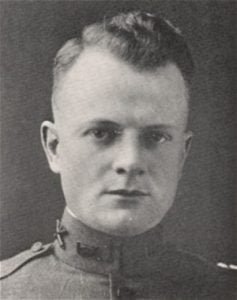
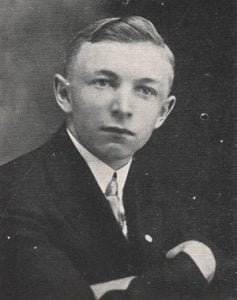

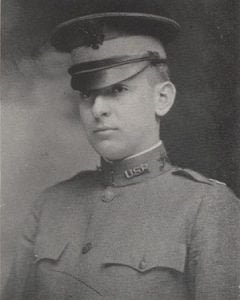

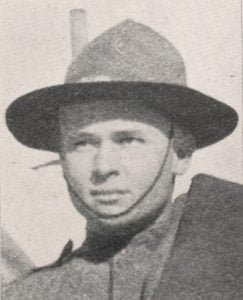

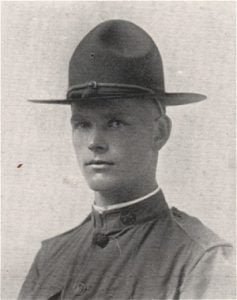
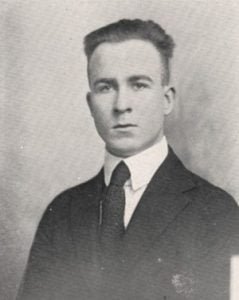
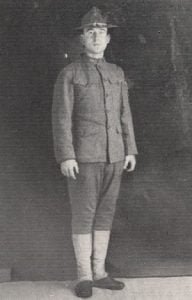
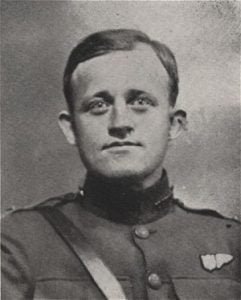
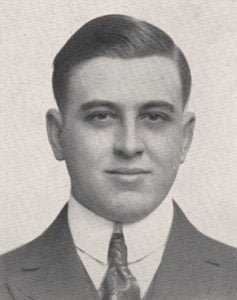
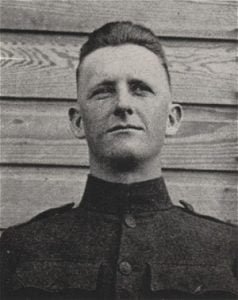


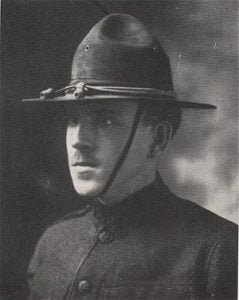
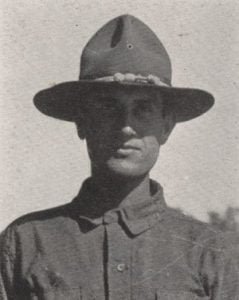

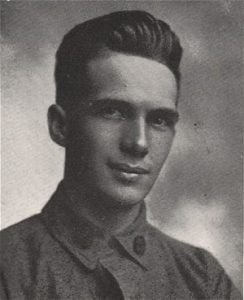
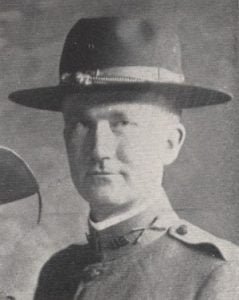
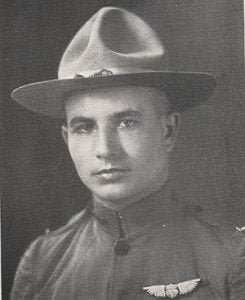

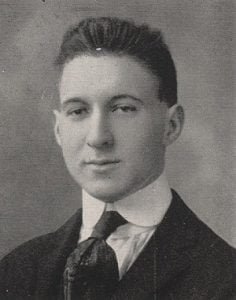

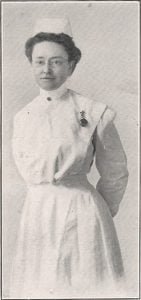
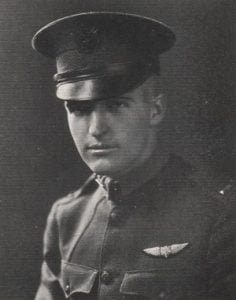

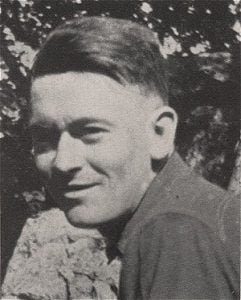
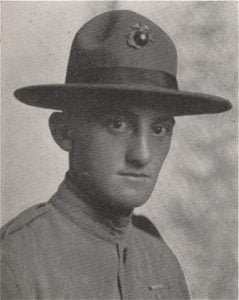





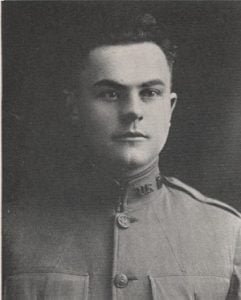
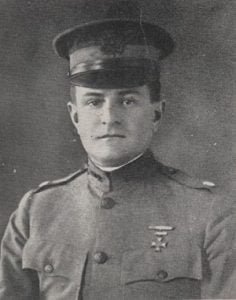
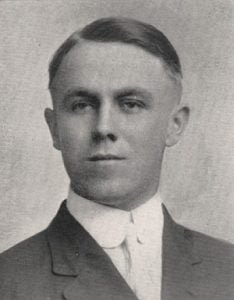

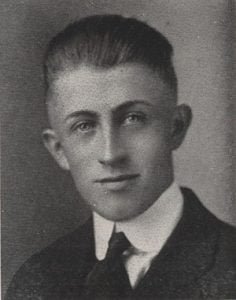
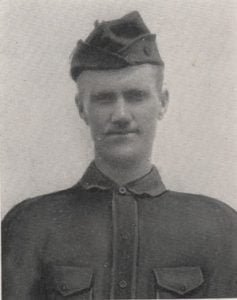

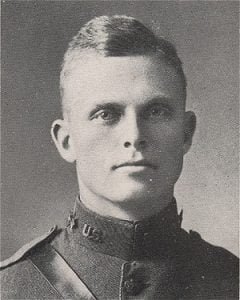
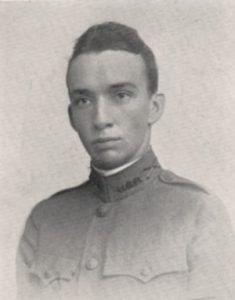

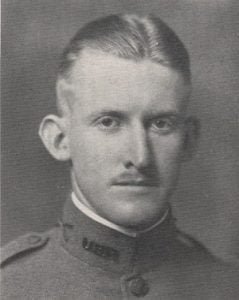
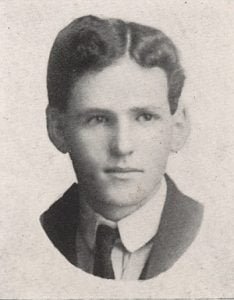


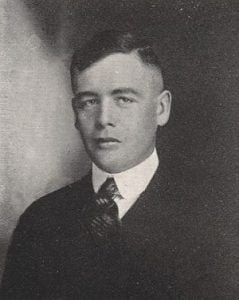



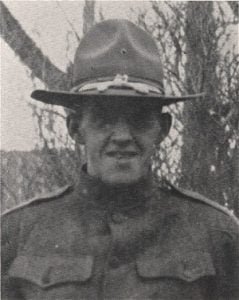
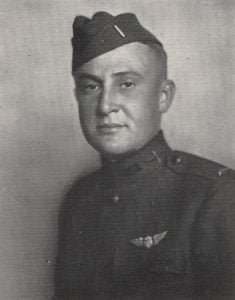
Discover more from Nebraska Genealogy
Subscribe to get the latest posts sent to your email.
